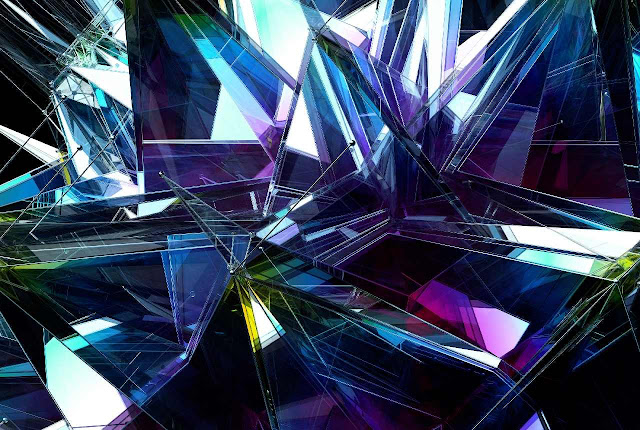Physicists create new state of matter from quantum soup of magnetically weird particles
Scientists have spotted a long hypothesized, never-seen-before state of matter in the laboratory for the first time.
By firing lasers at an ultracold lattice of rubidium atoms, scientists have prodded the atoms into a messy soup of quantum uncertainty known as a quantum spin liquid.
The atoms in this quantum magnetic soup quickly became connected, linking up their states across the entire material in a process called quantum entanglement. This means that any change to one atom causes immediate changes in all of the others in the material; this breakthrough could pave the way for the development of even better quantum computers, the researchers said in a paper describing their findings Dec. 3 in the journal Science.

“It is a very special moment in the field,” senior author Mikhail Lukin, a professor of physics at Harvard University and the co-director of the Harvard Quantum Initiative, said in a statement. “You can really touch, poke, and prod at this exotic state and manipulate it to understand its properties. It’s a new state of matter that people have never been able to observe.”
First theorized in 1973 by the physicist Philip Anderson, quantum spin liquids emerge when materials are cajoled into disobeying the usual rules that govern their magnetic behaviour.
Electrons have a property called spin, a type of quantum angular momentum, that can point either up or down. In normal magnets (like the ones people put on the fridge), the spins of neighboring electrons orient themselves until they all point in the same direction, generating a magnetic field. In non-magnetic materials, the spins of two neighboring electrons can flip to oppose each other. But in either case, the tiny magnetic poles form a regular pattern.
In quantum spin liquids, however, the electrons refuse to choose. Instead of sitting next to each other, the electrons are arranged into a triangular lattice, so that any given electron has two immediate neighbors. Two electrons can align their spins, but a third will always be the odd one out, destroying the delicate balance and creating a constantly switching jumble of agitated electrons.
This jumbled state is what the researchers call a “frustrated” magnet. As the spin states no longer know which way to point, the electrons and their atoms are instead thrown into a weird combination of quantum states called a quantum superposition. The ever-fluctuating spins now exist simultaneously as both spin up and spin down, and the constant switching causes atoms all the way across the material to entangle with each other in a complex quantum state.
The researchers couldn’t directly study the ideal quantum spin liquid, so they created a near perfect facsimile in another experimental system. They chilled an array of 219 trapped rubidium atoms — which can be used to minutely design and simulate various quantum processes — to temperatures of roughly 10 microkelvins (close to absolute zero or minus – 273.15 degrees Celsius° Celsius).
Occasionally one of the electrons in an atom is in a much higher energy level than the others, putting the atom in what is known as a Rydberg state. Much like with spin states, the spooky rules of quantum mechanics ensure that an atom does not want to be in a Rydberg state if its neighbor is. By firing lasers at certain atoms within the array, the researchers mimicked the three-way tug-of-war seen in a traditional quantum spin liquid.
Following the creation of their quantum Rydberg soup, the researchers conducted tests on the array and confirmed that its atoms had become entangled across the entire material. They had created a quantum spin liquid.
The scientists then turned their attention to a proof of concept test for its potential application: designing the qubits, or quantum bits, of a quantum computer. While ordinary computers use bits, or 0s and 1s to form the basis of all calculations, quantum computers use qubits, which can exist in more than one state at once. Qubits, however, are incredibly fragile; any interaction with the outside world can easily destroy the information they carry.
But the special nature of the quantum spin liquid’s material-wide entanglement, however, could allow for far more robust information storage. That’s because instead of encoding quantum information into just one qubit, it could allow for information to be contained in the shape — or the topology — that the entangled spin states make throughout the material itself; creating a “topological qubit.” By encoding information in the shape formed by multiple parts rather than one part alone, the topological qubit is much less likely to lose all of its information.
The researchers’ proof of concept created only a tiny topological qubit, just a few tens of atoms long, but in the future, they hope to create much larger, more practical ones.
“Learning how to create and use such topological qubits would represent a major step toward the realization of reliable quantum computers,” co-author Giulia Semeghini, a quantum physicist at Harvard University, said in the statement. “We show the very first steps on how to create this topological qubit, but we still need to demonstrate how you can actually encode it and manipulate it. There’s now a lot more to explore.”
Do not forget to share your opinion with us to provide you with the best posts !



0 Comments